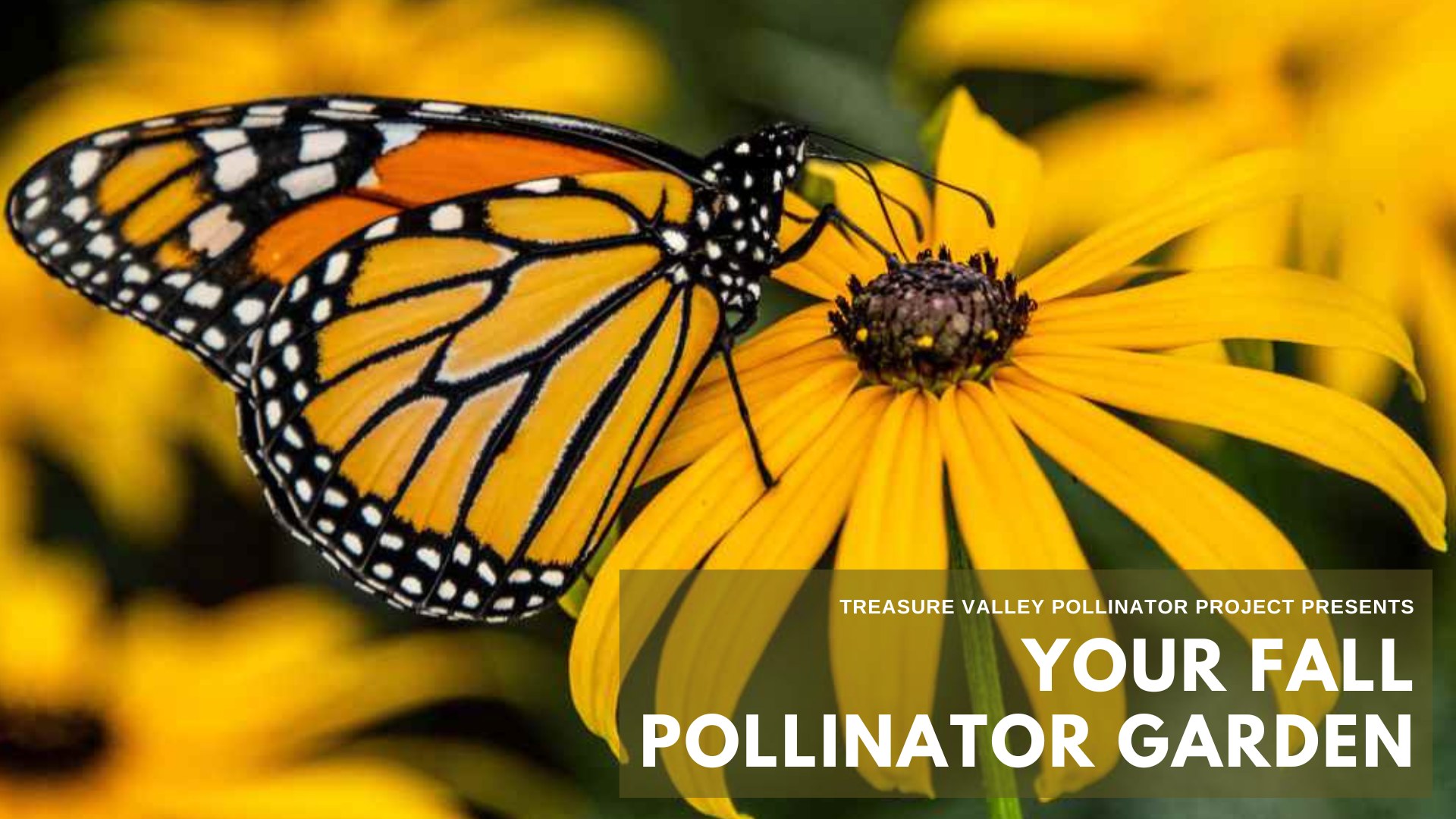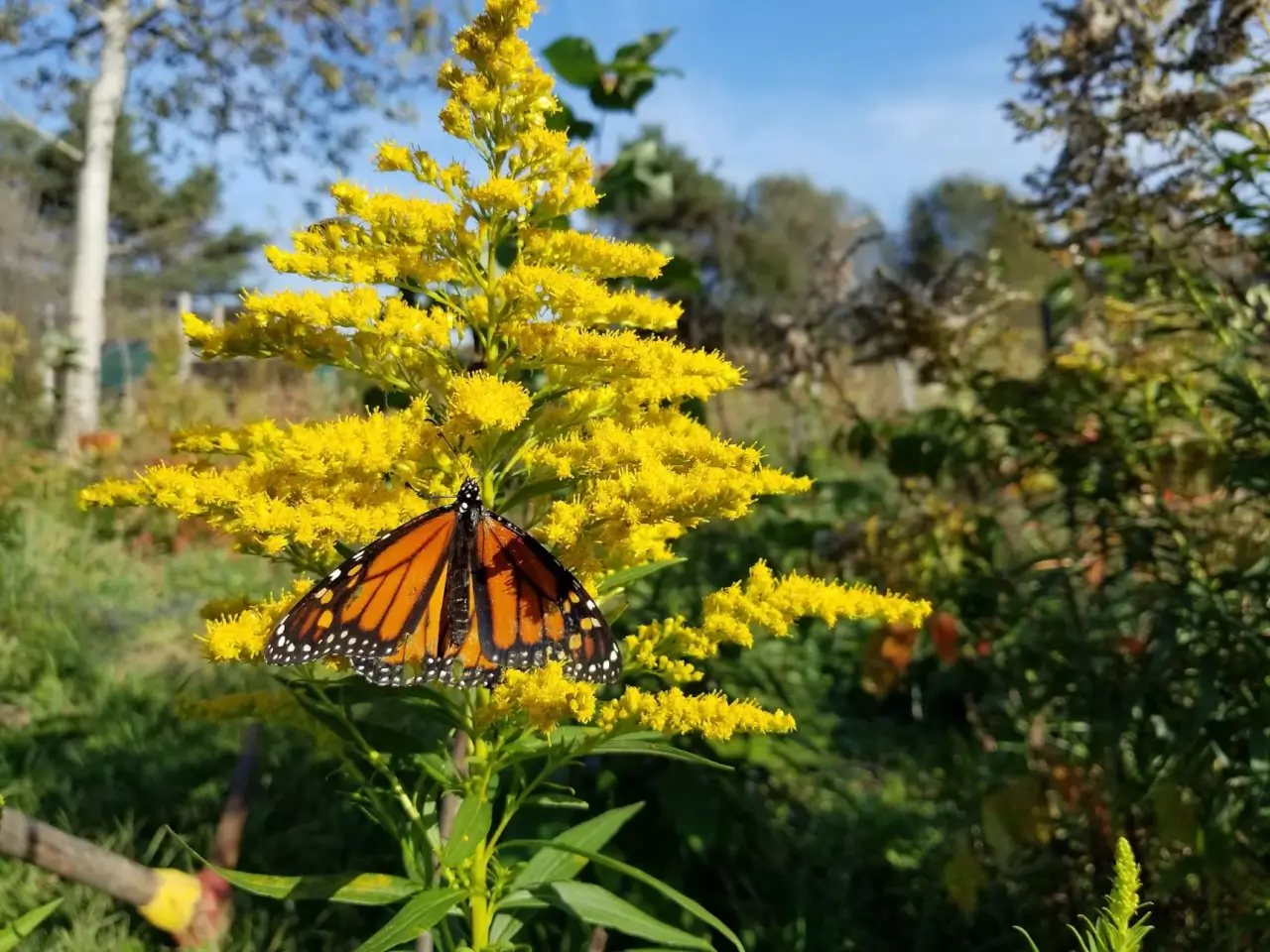As leaves turn and autumn arrives, your garden’s needs change. Preparing for pollinators becomes a new focus.
Imagine your garden bustling with bees, butterflies, and birds, even as the air turns crisp. Fall isn’t just about pumpkins and harvests; it’s a key time to set the stage for these vital garden visitors. Pollinators play a crucial role in the ecosystem, helping plants to reproduce and produce the fruits and vegetables we enjoy.
They need our help to find the resources they require to thrive throughout the year. Creating a pollinator-friendly garden this fall means thinking ahead. It’s about choosing the right plants, providing shelter, and avoiding chemicals that harm these creatures. With some simple steps, you can transform your space into a haven for pollinators. This not only ensures a vibrant garden come spring but also supports biodiversity. So, grab your gloves and let’s get started on making your garden a pollinator paradise this fall.
The Importance Of Pollinators In Your Garden
Pollinators play a crucial role in the health of our gardens. They help plants reproduce by transferring pollen from flower to flower. This process leads to the growth of fruits, vegetables, and seeds. Without pollinators, our gardens would struggle to thrive.
Key Pollinators For Healthy Ecosystems
Bees, butterflies, and birds are garden heroes. They are essential for a balanced ecosystem. These creatures support the growth of plants, which in turn, provide oxygen and food.
Benefits Of Attracting Pollinators
- Better fruit and vegetable yields
- More vibrant and diverse flowers
- Support for local wildlife

Assessing Your Fall Garden’s Needs
Assessing Your Fall Garden’s Needs is key to creating a haven for pollinators. A vibrant autumn garden provides crucial support for bees, butterflies, and other pollinating insects preparing for winter. Start by evaluating what your garden offers and what it lacks.
Evaluating Existing Plant Life
Take stock of your current plants. Look for those that thrive in fall and support pollinators. Identify gaps where you could add more variety or extend blooming times. This helps pollinators find food over a longer period.
- Check plant health.
- Identify non-blooming plants.
- Plan for next season’s blooms.
Understanding Seasonal Changes
Seasons affect plant growth and pollinator activity. In fall, shorter days and cooler temperatures signal plants to prepare for dormancy. Yet, many pollinators are still active and need food sources.
| Month | Plant Activity | Pollinator Needs |
|---|---|---|
| September | Some flowers still bloom | Nectar and pollen sources needed |
| October | Plants begin to go dormant | Shelter and late food sources important |
| November | Most plants are dormant | Evergreens and hardy plants provide shelter |
By understanding these changes, you can plan a garden that supports pollinators even as the season winds down.
Choosing The Right Plants For Fall Pollinators
Let’s talk about Choosing the Right Plants for Fall Pollinators. Your garden needs the right flowers to help pollinators thrive. This is key for a lively garden. Think bees, butterflies, and birds. They all need our help. Picking the right plants for fall can do just that. Let’s dive into how.
Best Fall Flowers For Pollinators
- Asters – Late bloomers. Great for bees.
- Goldenrod – Bright and tall. Attracts many insects.
- Sunflowers – Big and bold. Perfect for birds and bees.
- Zinnias – Colorful and long-lasting. Butterflies love them.
- Joe-Pye Weed – Tall and pink. A butterfly favorite.
These flowers keep your garden busy. They offer food for pollinators. This is important as food gets scarce in fall.
Incorporating Native Plants
Why choose native plants? They’re made for your area’s climate and soil. This means less water and care. Plus, local pollinators prefer them. It’s a win-win.
| Plant | Type | Benefits |
|---|---|---|
| Milkweed | Native | Feeds monarch butterflies. |
| Blazing Star | Native | Attracts bees and butterflies. |
| Wild Bergamot | Native | Loved by bees. |
Adding native plants supports the local ecosystem. It helps more than just your garden. It helps the whole area.

Creating A Pollinator-friendly Environment
Creating a Pollinator-Friendly Environment is key for a thriving garden. As fall approaches, it’s time to prepare. A garden buzzing with bees, butterflies, and birds is not only a delight to watch but also vital for plant pollination. Let’s dive into how you can invite these helpful creatures to your garden.
Shelter And Nesting Sites
Providing shelter is essential. Pollinators need safe spots to rest and raise their young. Here are some tips:
- Leave dead wood and stems for nesting bees.
- Install bat boxes and birdhouses.
- Allow leaf litter to accumulate in corners for overwintering insects.
Providing Water Sources
Water is just as important as food for pollinators. Here’s what you can do:
- Set up shallow bird baths with stones for bees and butterflies to land on.
- Keep water features clean and filled.
- Place small dishes of water at ground level for ground dwellers.
Garden Maintenance Practices For Pollinator Health
As fall approaches, gardeners can take steps to ensure pollinators thrive. Healthy gardens attract bees, butterflies, and other vital pollinators. Proper maintenance practices are key. They support pollinator health and biodiversity. Let’s explore ways to maintain your garden without harming these essential creatures.
Pesticide Alternatives
Opt for natural pest control to keep your garden pollinator-friendly. Chemical pesticides can harm bees and butterflies. Consider these alternatives:
- Plant companion species that naturally repel pests.
- Use insecticidal soaps for a mild, safer option.
- Introduce beneficial insects like ladybugs to control pests.
Organic Mulching Techniques
Mulch is vital for soil health and moisture retention. It also helps pollinators by providing habitat. Use organic mulching techniques:
- Apply straw or bark to insulate plants and soil.
- Leave leaf litter to offer shelter for pollinators.
- Avoid dyed mulches as they can be toxic to wildlife.
Remember, a well-maintained garden is a haven for pollinators. Use these practices to support their health all year round.
Supporting Pollinators Beyond Plants
Supporting Pollinators Beyond Plants means thinking outside the flower box. It’s not just about what they feed on. It’s also about where they live and how they spend their time when not visiting your garden. Let’s explore ways to make your garden a haven for these vital creatures.
Installing Bee Hotels
Bee hotels offer solitary bees a cozy place to live. Unlike honeybees, solitary bees don’t live in hives. They need small nooks to nest. A bee hotel is perfect for this. You can make one or buy one. Here’s how:
- Choose a sunny spot protected from rain.
- Fill the hotel with bamboo tubes or drilled wood blocks.
- Mount it at least a meter off the ground.
This simple step can boost your garden’s health. It encourages more bees to visit and stay.
Butterfly Feeding Stations
Butterflies need more than nectar. They also need salt and other minerals. A butterfly feeding station can provide these. Here’s a simple way to make one:
- Fill a shallow dish with sand.
- Mix in some salt or mineral supplements.
- Add water so the sand is wet but not underwater.
- Place it in a sunny, protected area of your garden.
This station will attract butterflies. They will ‘sip’ the minerals using their tongues.
By taking these steps, you invite more pollinators into your garden. This helps your plants and the environment. Remember, every small action counts. Let’s make our gardens welcoming for these helpful insects.
Monitoring Your Garden’s Pollinator Activity
Monitoring your garden’s pollinator activity is crucial for a thriving ecosystem. As fall approaches, gardeners should take note of the insects and birds that visit their plants. This data helps track the health and diversity of your garden’s pollinators. Keep your eyes open for bees, butterflies, and hummingbirds. Their presence is a good sign!
Keeping A Pollinator Journal
Start a pollinator journal to record your observations. Note the date, time, weather, and types of pollinators you see. Use simple bullet points to make it easy:
- Date: October 1
- Time: 2 PM
- Weather: Sunny
- Observed: 5 honeybees, 3 butterflies
Regular entries give insight into patterns and peak activity times.
Identifying Signs Of A Thriving Habitat
Look for signs of a thriving habitat in your garden. Healthy plants and a variety of pollinators are key indicators. Here’s what to watch for:
| Sign | Meaning |
|---|---|
| Multiple Pollinator Species | Diverse ecosystem |
| Active Pollinators | Abundant food sources |
| Larvae and Pupae | Successful reproduction |
Spotting these signs means your garden is a pollinator paradise!
Community Engagement And Education
As fall approaches, it’s time to engage the community in preparing gardens for pollinators. Education and active participation are key. Local gardens can become learning hubs, fostering awareness about the importance of pollinators.
Hosting Garden Tours
Garden tours invite neighbors to learn and get inspired. They see firsthand how gardens support bees, butterflies, and other pollinators. Guided tours with a focus on pollinator-friendly plants make a big impact.
- Showcase native plants
- Discuss the role of each species in attracting pollinators
- Share stories of garden successes and challenges
Workshops On Pollinator Conservation
Workshops offer practical tips on creating pollinator havens. Experts share knowledge on plant selection, garden design, and seasonal care. Participants leave empowered to make a difference in their own backyards.
- Choose the right plants for pollinators
- Design gardens that bloom in all seasons
- Build bee hotels and butterfly feeders

Frequently Asked Questions
What Plants Attract Pollinators In Fall?
Planting asters, goldenrods, and sedum in fall attracts bees, butterflies, and other pollinators. These plants provide necessary nectar and pollen as food sources during cooler months, ensuring your garden remains a haven for pollinators.
How Do I Prepare My Garden For Pollinators?
Start by reducing pesticide use and planting native flowering plants. Ensure a variety of plants bloom into fall to offer continuous food sources. Adding a water feature and leaving some garden areas wild can also create a welcoming environment for pollinators.
When Should I Start Preparing My Garden For Pollinators?
Begin preparations in late summer to early fall. This timing allows you to plant fall-blooming flowers and make garden adjustments. It ensures your garden is ready to support pollinators when they need it most.
Can I Use Mulch In A Pollinator-friendly Garden?
Yes, organic mulches like straw or shredded leaves can benefit pollinator-friendly gardens. They retain soil moisture, suppress weeds, and provide shelter for ground-nesting bees. Avoid using dyed or treated mulches that could harm pollinators.
Conclusion
As fall approaches, remember your garden’s tiny visitors. Ready your soil, choose the right plants, and maintain a natural habitat. Your efforts will pay off, attracting bees, butterflies, and other pollinators. They’ll thank you by helping your garden thrive. Simple steps taken today ensure a lively, blooming space come spring.
So grab your gloves and get started. Your garden, and the pollinators, will be buzzing with life.



